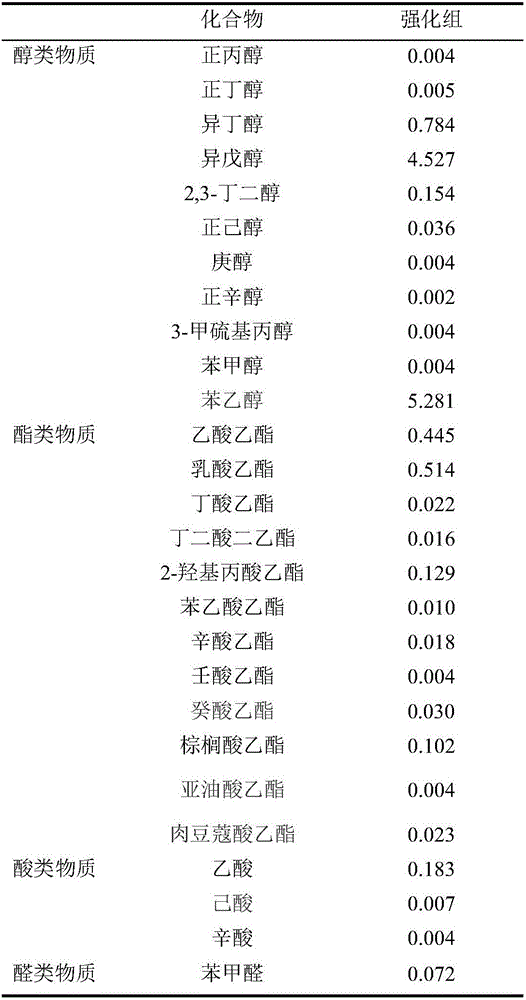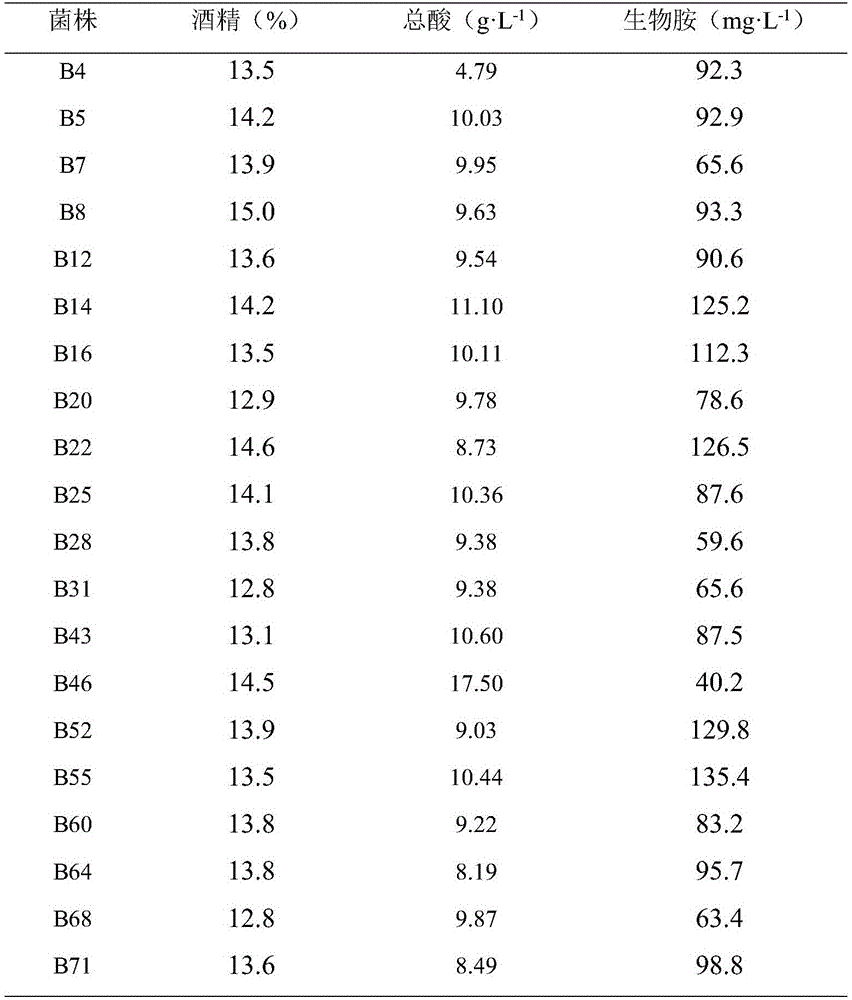Lactobacillus plantarum and its application in the high-acid yellow wine production for acid modulation
A technology of Lactobacillus plantarum and rice wine, applied in the preparation of alcoholic beverages, microorganism-based methods, bacteria, etc., can solve the problems of inability to meet the production needs of enterprises, affecting product safety, unpleasant smell, etc., to improve quality and safety. performance, low cost, and small differences
- Summary
- Abstract
- Description
- Claims
- Application Information
AI Technical Summary
Problems solved by technology
Method used
Image
Examples
Embodiment 1
[0051] Embodiment 1: the preparation of the seed liquid of Lactobacillus plantarum CGMCC No.12757 culture fluid
[0052] Bacterial culture in solid slant test tubes: use MRS agar medium and culture at 30°C for 3 days.
[0053] Preparation of seed medium: add glutinous rice to water and soak at 25°C for 4 to 5 days, drain and steam rice, add 4 times the amount of water according to the amount of glutinous rice, control the temperature at 50°C, add neutral protease at 8U / g glutinous rice, and stir well Keep warm for 40 minutes, heat up to 60°C, add glucoamylase at 140U / g glutinous rice, stir evenly, keep warm at 55°C for saccharification for 4 hours, stir once every hour during this period, then filter, and sterilize at 115°C for 20 minutes after packaging. Cool to room temperature and set aside.
[0054] Seed preparation: Inoculate 2 rings of solid slant test tube bacterial strains in the above-mentioned liquid Erlenmeyer flask containing the seed medium, cultivate at 30°C for...
Embodiment 2
[0055] Embodiment 2: the preparation of cultivation tank Lactobacillus plantarum CGMCC No.12757 culture solution
[0056] Add water to glutinous rice and soak it at 25°C for 5 days, drain and steam the rice, add 4 times the amount of water according to the amount of glutinous rice, control the temperature at 50°C, add neutral protease at 8U / g glutinous rice, stir well, keep warm for 40 minutes, and heat up to At 60°C, add glucoamylase at 140U / g glutinous rice, stir evenly, keep warm and saccharify at 55°C for 4 hours, stir once every hour during this period, sterilize at 70°C for 30 minutes, cool to 32°C, and inoculate with 10% inoculum Put into the liquid triangular flask seed of embodiment 1, cultivate at 30 ℃ for 18 hours.
Embodiment 3
[0057] Embodiment 3: the fermentation process of sour rice wine with high acidity
[0058] Dosage of ingredients: based on 100kg of glutinous rice, 17kg of wheat koji, 5kg of rice wine yeast culture solution, 3.5kg of lactic acid bacteria culture solution, and 170kg of water.
[0059] According to the ratio of raw materials, the specific steps of the production process are as follows:
[0060] (1) Rice soaking: After the rice is screened and removed, put it into the tank and soak it in water until the tank is full, wash off the floating foam on the water surface, soak for 24 hours, and drain;
[0061] (2) Steamed rice: Standard requirements for steamed rice: rice is hard on the outside and soft on the inside, loose but not mushy, cooked but not rotten, and uniform;
[0062] (3) Cold rice: Use a blower to blow and cool the steamed rice to 50°C, and control the product temperature in the tank to 24°C;
[0063] (4) Pre-fermentation: Add cooled rice and barley koji, add feed wat...
PUM
 Login to View More
Login to View More Abstract
Description
Claims
Application Information
 Login to View More
Login to View More - R&D
- Intellectual Property
- Life Sciences
- Materials
- Tech Scout
- Unparalleled Data Quality
- Higher Quality Content
- 60% Fewer Hallucinations
Browse by: Latest US Patents, China's latest patents, Technical Efficacy Thesaurus, Application Domain, Technology Topic, Popular Technical Reports.
© 2025 PatSnap. All rights reserved.Legal|Privacy policy|Modern Slavery Act Transparency Statement|Sitemap|About US| Contact US: help@patsnap.com


